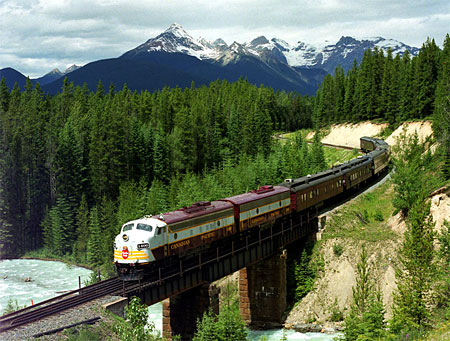"There is no railway journey of comparable length anywhere in the world. The Trans-Siberian is the big train ride. All the rest are peanuts." (Eric Newby, The Big Red Train Ride)

It crosses eight time zones -- a third of the world. It carves its way through the Ural Mountains and across the Russian Steppe. It navigates taigas, swamps and permafrost. It is "The Big Red Train Ride".
The Trans-Siberian Railroad was first conceived in the 1850's. But it was not until Tsar Alexander III came to power that the railroad was completed. Construction was done mainly by prisoners and soldiers. The future tsar, Nicholas II, inaugurated the railroad at the end of his around the world journey in 1891. A Trans-Manchurian link was completed in 1901.

However, with the Russo-Japanese war of 1904-1905, Russia was concerned about that stretch of the railroad. In 1916, they built another link, the Amur Railway, to replace the Manchurian section, making the entire Trans-Siberian Railway within Russia's borders. At the time, Nicholas II was tsar.
Russia's Civil War damaged sections of the railroad which were repaired in the 1920's. At the end of the same decade, an electrification project got underway, one that would not be completed until 2002.

The famous railroad would serve to increase Russia's economic and military might, providing Moscow an essential link with the Pacific Ocean. During the Second World War, China took over the Trans-Manchurian Line. Of course, Russia fell back on its alternate route, the Amur Railway, transporting essential goods back and forth.
Today, the 5,778 mile long journey on the Trans-Siberian Railroad takes eight days.

No comments:
Post a Comment